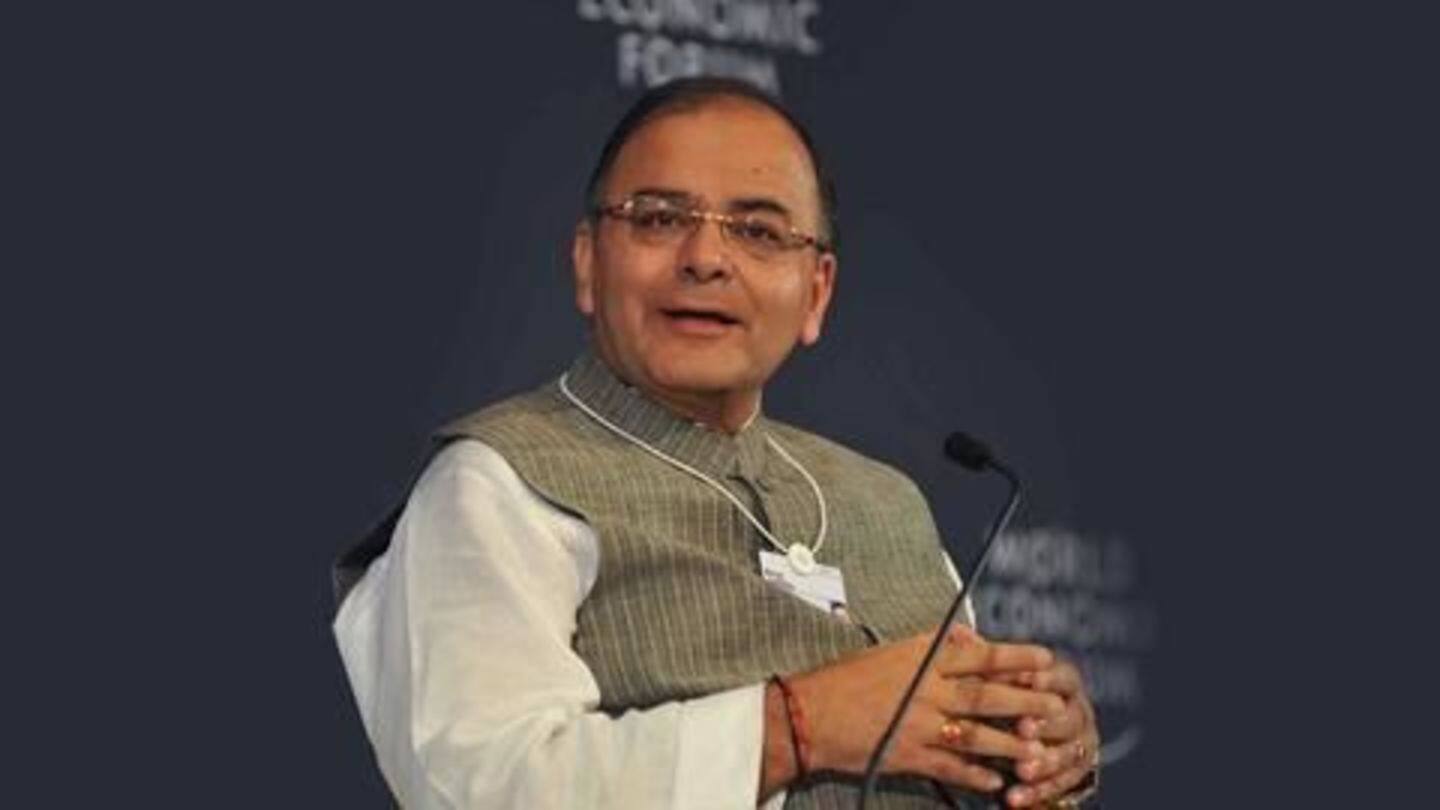
Arun Jaitley presents Economic Survey 2016-17 to Parliament
What's the story
Finance Minister Arun Jaitley tabled the Economic Survey 2017-18 prepared by Chief Economic Advisor Arvind Subramanian. The survey is an important document that serves as the annual government report card. It sets the tone for the union budget a day before it is tabled in parliament. It also puts forth new policy ideas. Here are the highlights of the survey:
Growth
2016-17 growth rate estimated at 7.1%
The GDP growth rate (at constant market rates) for 2016-17 is estimated at 7.1%, down from 7.6% in 2015-16. The 2016-17 estimate is based on the first seven to eight months of the financial year. GDP growth for 2017-18 is projected at 6.75% to 7.5%. The government said demonetization's adverse impact on GDP growth is expected to be transitional.
Universal Basic Income
UBI a "powerful idea" but not ready for implementation
The Economic Survey suggested that the Universal Basic Income (UBI) model would be a "powerful idea" to replace the existing range of subsidies for poverty alleviation. It said such a scheme is not yet ready for implementation. UBI would cost 4-5% of India's GDP. Under UBI, all citizens would receive a fixed monthly income regardless of their other income.
Taxes
Taxes on income, real estate could be reduced
Introduction of the Goods and Services Tax (GST) and other structural reforms would take growth rate to 8-10%. Income tax rates and stamp duties for real estate can be reduced. There should be an acceleration in the timetable for reducing corporate taxes. The survey recommended that efforts to tax disclosed and undisclosed wealth shouldn't cause tax harassment.
Prices
CPI inflation rates remain under control
The Consumer Price Index (CPI) inflation has remained under control for the third successive financial year. Average CPI inflation declined from 5.9% in 2014-15 to 4.9% in 2015-16. In the current fiscal year, CPI inflation has been averaging around 5%. Lower inflation rates could give the Reserve Bank of India (RBI) impetus to lower loan rates.
Trade
India narrows trade deficit, exports increase marginally
There's been a reversal in negative export growth trends with a 0.7% increase in exports 2016-17 (April-December) to $198.8bn. Imports have declined 7.4% in 2016-17 (April-December) to $275.4bn. The trade deficit has declined from $100.1bn in 2015-16 (April-December) to $76.5bn in 2016-17 (April-December). The survey said the rupee has performed better than currencies of most other emerging market economies so far in 2016-17.
Agriculture & services
Agriculture sector witnesses higher growth
Agriculture-sector is estimated to grow at 4.1% in 2016-17, compared to 1.2% in 2015-16. Better monsoon rains in the current fiscal has helped explain the higher growth. Service sector is estimated to grow at 8.9% in 2016-17, which is nearly the same as 2015-16. An increase in public administration, defence and other services, boosted by the Seventh Pay Commission payouts could explain the growth.
Non-Performing Assets
Unresolved bad debt problem to hinder India's growth
The survey said the bad debt problems in India's public banks remain unresolved even after eight years. 50 companies account for 71% of all stressed debts. Of these, 10 companies collectively owe banks over Rs. 40,000 crore. The survey predicts that the debt problem may soon take a toll on India's economic growth. It said large write-offs will be required to restore indebted corporates.